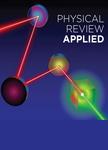版权所有:内蒙古大学图书馆 技术提供:维普资讯• 智图
内蒙古自治区呼和浩特市赛罕区大学西街235号 邮编: 010021

作者机构:Department of Electrical and Computer Engineering University of Minnesota Minneapolis Minnesota 55455 USA Department of Materials Science and Engineering University of Wisconsin-Madison Madison Wisconsin 53706 USA Department of Chemical Engineering and Materials Science University of Minnesota Minneapolis Minnesota 55455 USA
出 版 物:《Physical Review Applied》 (Phys. Rev. Appl.)
年 卷 期:2018年第9卷第4期
页 面:044028-044028页
核心收录:
基 金:Norsk Sykepleierforbund, NSF Defense Advanced Research Projects Agency, DARPA Microelectronics Advanced Research Corporation, MARCO National Science Foundation, NSF, (ECCS-1310338, ECCS-1310338) National Science Foundation, NSF
主 题:Antiferromagnetism Magnetic anisotropy Spintronics Ferromagnets Magnetic multilayers Magnetic tunnel junctions Transition metal alloys Magnetization measurements
摘 要:Magnetic materials that possess large bulk perpendicular magnetic anisotropy (PMA) are essential for the development of magnetic tunnel junctions (MTJs) used in future spintronic memory and logic devices. The addition of an antiferromagnetic layer to these MTJs was recently predicted to facilitate ultrafast magnetization switching. Here, we report a demonstration of a bulk perpendicular synthetic antiferromagnetic (PSAFM) structure comprised of a (001) textured Fe−Pd/Ru/Fe−Pd trilayer with a face-centered-cubic (fcc) phase Ru spacer. The L10 Fe−Pd PSAFM structure shows a large bulk PMA (Ku∼10.2 Merg/cm3) and strong antiferromagnetic coupling (−JIEC∼2.60 erg/cm2). Full perpendicular magnetic tunnel junctions (PMTJs) with a L10 Fe−Pd PSAFM layer are then fabricated. Tunneling magnetoresistance ratios of up to approximately 25% (approximately 60%) are observed at room temperature (5 K) after postannealing at 350 °C. Exhibiting high thermal stabilities and large Ku, the bulk PMTJs with an L10 Fe−Pd PSAFM layer could pave a way for next-generation ultrahigh-density and ultralow-energy spintronic applications.